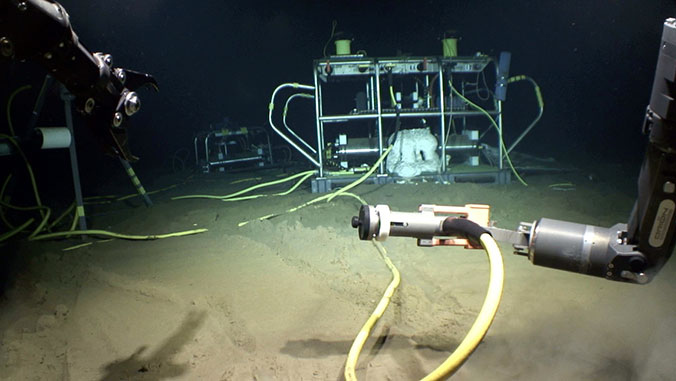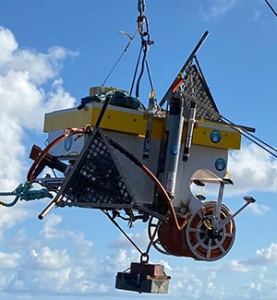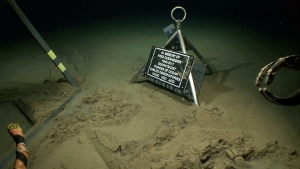
The world’s deepest cabled observatory—the University of Hawaiʻi’s ALOHA Cabled Observatory (ACO)—celebrated 10 years of continuously providing data directly from the seafloor to shore-based scientists on June 6. During the milestone cruise, researchers and students participating in the Research Experience for Undergraduates joined the deepsea action via live streaming video from the UH remotely operated vehicle Luʻukai.
During the field expedition, UH Mānoa researchers and engineers serviced the infrastructure, connected new equipment and deployed a memorial plaque honoring ACO’s founder.

ACO is the deepest operating ocean observatory on the planet that provides plug-and-play power and Internet to scientific instruments on the seafloor. The development, deployment and operation of the nearly three-mile deep observatory is led by the UH Mānoa School of Ocean and Earth Science and Technology (SOEST)—starting in 2002, testing in 2007 and full node deployment in 2011 with support from the National Science Foundation.
“Creating a continuous 10-year data set of temperature, salinity, velocity, acoustics/ocean sound—which are all ‘essential ocean variables’ as defined by the Global Ocean Observing System—is quite a feat,” said Bruce Howe, SOEST professor of Ocean and Resources Engineering, who co-leads ACO. “This accomplishment required vision on the part of the founders, dedicated hard work of many researchers and engineers, and commitment from UH and funding agencies.”
ACO’s founder, the late SOEST geophysics Professor Fred Duennebier, was a pioneer of ocean cabled observatories. He is considered the father of ACO as well as two prior cabled observatories—the Hawaiʻi Undersea Geo-Observatory on Lōʻihi Seamount and the Hawaiʻi-2 Observatory halfway between Hawaiʻi and California.

In commemoration of Duennebier’s contributions to the field of cabled observatories and geophysics, the ACO team deployed the memorial plaque for Duennebier at the observatory during the recent cruise.
This event is an example of UH Mānoa’s goal of Excellence in Research: Advancing the Research and Creative Work Enterprise (PDF), one of four goals identified in the 2015–25 Strategic Plan (PDF), updated in December 2020.
For more information, see SOEST’s website.
–By Marcie Grabowski

